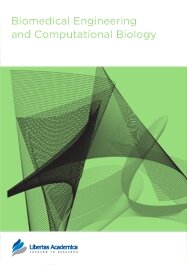

Publication Date: 25 Jul 2011
Type: Original Research
Journal: Biomedical Engineering and Computational Biology
Citation: Biomedical Engineering and Computational Biology 2011:3 25-32
doi: 10.4137/BECB.S7050

For the subcutaneous administration of a chemical agent (salubrinal), we constructed a mathematical model of molecule transportation and subsequently evaluated the kinetics of diffusion, convection, and molecular turnover. Salubrinal is a potential therapeutic agent that can reduce cellular damage and death. The understanding of its temporal profiles in local tissue as well as in a whole body is important to develop a proper strategy for its administration. Here, the diffusion and convection kinetics was formulated using partial and ordinary differential equations in one- and three-dimensional (semi-spherical) coordinates. Several key parameters including an injection velocity, a diffusion coefficient, thickness of subcutaneous tissue, and a permeability factor at the tissue-blood boundary were estimated from experimental data in rats. With reference to analytical solutions in a simplified model without convection, numerical solutions revealed that the diffusion coefficient and thickness of subcutaneous tissue determined the timing of the peak concentration in the plasma, and its magnitude was dictated by the permeability factor. Furthermore, the initial velocity, induced by needle injection, elevated an immediate transport of salubrinal at t < 1 h. The described analysis with a combination of partial and ordinary differential equations contributes to the prediction of local and systemic effects and the understanding of the transportation mechanism of salubrinal and other agents.
PDF (716.89 KB PDF FORMAT)
RIS citation (ENDNOTE, REFERENCE MANAGER, PROCITE, REFWORKS)
BibTex citation (BIBDESK, LATEX)


My experience publishing in 'Clinical Medicine Insights: Oncology' was excellent. I was impressed with the quick review and proof-read processes. The electronic submission website is user friendly, and the continuous manuscript status updates received from the journal were helpful in tracking the progress of the paper.
Facebook Google+ Twitter
Pinterest Tumblr YouTube